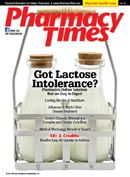Publication
Article
Pharmacy Times
Case Studies
Case One
AD is a 55-year-old man with a history of alcoholic liver cirrhosis. Over the prior 6 months, he reports experiencing 2 episodes of markedly elevated serum ammonia levels (normal levels are <35 μmol/L) accompanied by an altered level of consciousness (an episode of overt hepatic encephalopathy) despite being on 3 (10 g/15 mL) cups of lactulose a day. At his most recent visit, AD’s gastroenterologist provided him with a prescription for rifaximin 550 mg to be taken by mouth twice daily to prevent recurrent bouts of hepatic encephalopathy. AD, while searching a consumer medical Web site, reads that rifaximin is an antibiotic. When dropping off his prescription, AD asks the pharmacist, “Did my doctor make a mistake? He said nothing about an infection!”
How should the pharmacist respond to AD?
Case TWO
HC is a 57-year-old man who comes to the pharmacy counter to pick up his refill for clopidogrel 75 mg. When he goes to pay for his prescription, he hands the pharmacist a box of Prilosec OTC (omeprazole) and explains that he has recently been experiencing mild episodes of heartburn. HC wants to know if Prilosec OTC would work for him.
How should the pharmacist respond?
ANSWERS
Case 1: Hepatic encephalopathy is a worsening of brain function—ranging from confusion to coma—that often occurs repeatedly in patients with liver dysfunction. When the liver is not working properly, it no longer optimally removes nitrogenous waste from the bloodstream. The increased levels of nitrogenous waste are converted to ammonia, which is thought to play a role in the development of hepatic encephalopathy. The pharmacist should explain to AD that rifaximin is in fact an antibacterial agent. It kills off gut bacteria responsible for the generation and conversion of nitrogenous waste to ammonia. Consequently, it can reduce ammonia levels in the bloodstream and prevent the recurrence of overt hepatic encephalopathy. In March 2010, the FDA approved rifaximin for this indication. The pharmacist should inform AD that the addition of rifamixin to his lactulose is not a mistake. The pharmacist should also notify AD that rifaximin, unlike antibiotics he may have previously taken for infections, will likely be prescribed to him for an extended period of time.
Case 2: Although omeprazole (Prilosec OTC) is certainly an effective therapy for the self-management of occasional heartburn, it is a poor choice for HC. This is because patients at risk for heart attacks or strokes who use clopidogrel to prevent blood clots do not get the full effect of the drug when taken with cytochrome P450 2C19 (CYP2C19) isoenzyme inhibitors. Omeprazole is one of a number of drugs that inhibits the CYP2C19 isoenzyme responsible for the conversion of clopidogrel into its active metabolite. These effects are seen regardless of whether the 2 drugs are given at the same time or taken at different times during the day. As a result, studies have shown that when clopidogrel and omeprazole are taken together, the effectiveness of clopidogrel is reduced. The pharmacist should counsel HC about this drug interaction and recommend he try an OTC H2 blocker instead. Specifically, ranitidine, famotidine, or nizatidine are reasonable choices, whereas cimetidine, also a CYP2C19 inhibitor, is not. Although lansoprazole is also available over-the-counter, limited information exists about drug interactions between clopidogrel and proton pump inhibitors other than omeprazole and esomeprazole, making the recommendation to try lansoprazole more difficult.
function showAnswer() {document.getElementById("answer").style.display = 'block';document.getElementById("link").style.display = 'none';}
Dr. Coleman is an associate professor of pharmacy practice and director of the pharmacoeconomics and outcomes studies group at the University of Connecticut School of Pharmacy.







